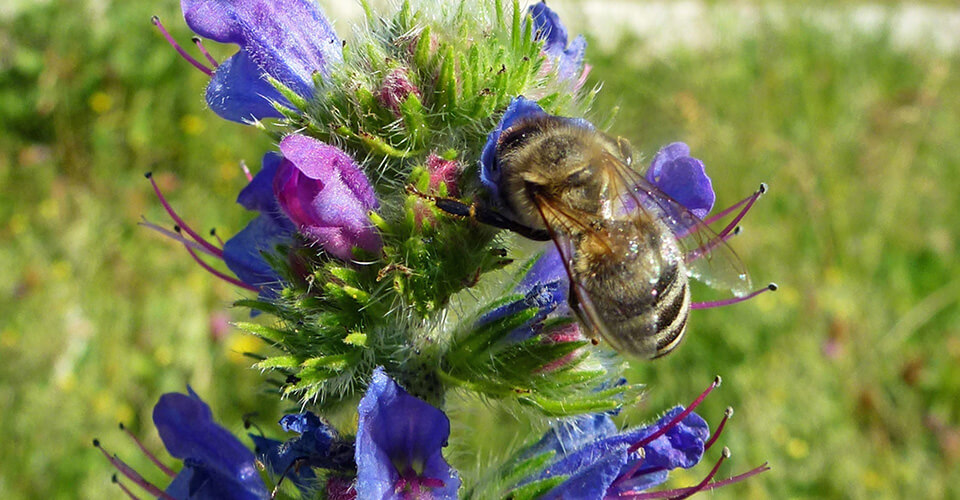We want to protect and foster biodiversity. That’s why KAPAG is proud to have a wildflower meadow of 2,500 m2 on its premises.
Crop spraying in agriculture and an increase in construction are just two reasons that explain why the habitat and food sources of bees, and all insects for that matter, are declining. Today people seem to prefer a work-free garden, including a robotic mower that keeps the lawn impeccably trimmed and a rock garden with no flowers.
KAPAG’s extensive 2,500-square-metre flower meadow is home to many rare indigenous plants. Among them is the viper’s bugloss (Hoplitis adunca), which is the sole source of food for the viper’s bugloss mason bee. The survival of the mason bee is therefore totally dependent on this plant species.

